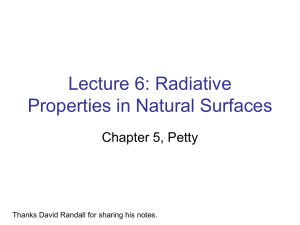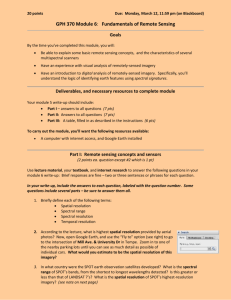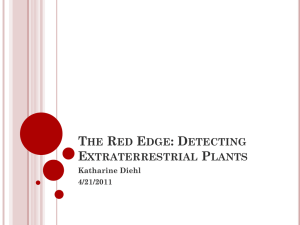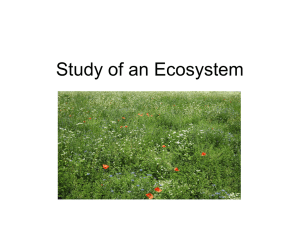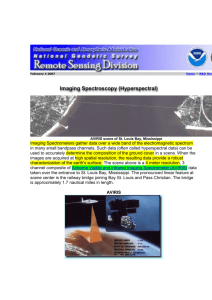Spectral unmixing of vegetation, soil and dry carbon cover in arid
advertisement
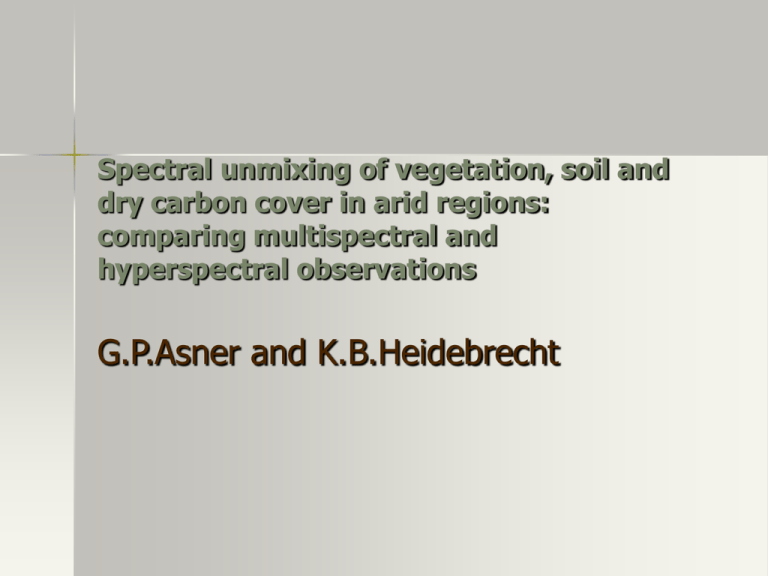
Spectral unmixing of vegetation, soil and dry carbon cover in arid regions: comparing multispectral and hyperspectral observations G.P.Asner and K.B.Heidebrecht Introduction Objective – Why Important? – Difficulties – Approaches – correlation of NDVI comparison of multi- and hyper-spectral observations to decompose remotely sensed data Study of impacts of climate variability and land use on vegetation cover small individual canopies - phenological changes - separation of NPV and bare soil in NDVI - Spectral Mixture Analysis SMA Assumes linear combination Two methods of reflectance coefficient selection Image-based reflectances used that are likely to exist in the area lack of pure pixels Spectral Libraries data readily collected lack of generability and scalability Data used – Image based Landsat TM – commonly available Terra ASTER – dense 5-channel sampling at SWIR2 Terra MODIS – available daily 15-channel sampling of visible and NIR The land under research Chihuahuan Desert, New Mexico - 210mm ppt per year - Long-term ecological research site - mainly grassland and shrub Requirements - low species diversity - strong differences of PV and NPV between sites - nearly constant soil type - few soil crusts Measurements ADC camera for grassland Ikonos camera for shrubland Areas 8ha each, with 300m N-S transect established using GPS Field Spectroradiometer - measurements every 5m along transects - all canopies within 5m of sampling pts measured - conversion to reflectance using calibration panel AVIRIS sensor – NASA ER-2 aircraft altitude 20km - pixels 19m x 19m Model and Analysis Auto MCU - Fully automated Monte Carlo based derivation of uncertainty of cover fractions - Code carried out on field spectra and sub-sampled to satellite channels Algorithms – tied SWIR2 PV, NPV, soil spectra ‘tied’ at 2.03μm Less dependent on biomass, architecture, biochemistry - division wavelength divided spectral reflectance values by reflectance at first mathematically inappropriate for linear SMA Results Landsat TM convolved data - little difference between shrubland and grassland sites MODIS and most of AVIRIS - spectrally indistinguishable ASTER - some differences AVIRIS – finds negative PV fractions - bare soil overestimated by ~20% - NPV fractions good Tied SWIR2 – showed consistent accuracy - corroborated by previous work Future Important to continue this research for ecological monitoring Further research into the use of instruments such as AVIRIS (i.e. high SNR in SWIR2) for use in SMA methods





